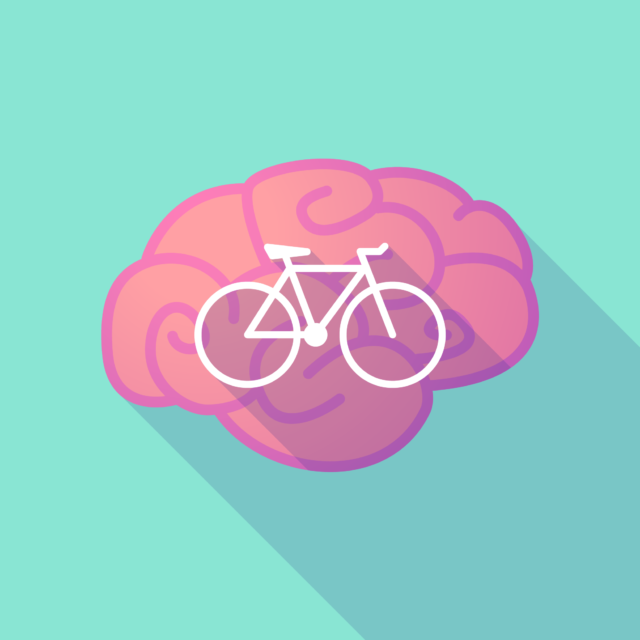July 5, 2017
This is Your Brain on Bikes: The Neurological Effects of Cycling

We all know that cycling has great physical benefits — improved muscle tone, increased weight loss, stronger cardiovascular health, and so on. But have you ever wondered if it stops there? It turns out that scientists have also been wondering about the extent of cycling’s benefits for years. According to recent research, cycling has a wide array of psychological benefits that stretch beyond what meets the eye.
One of cycling’s clearest mental benefits is its effect on mood. It’s no secret that cycling makes people happier, but this uplifting effect may involve some unexpected neurological factors. A 2015 study found that aerobic exercise increases blood levels of anandamide, a natural cannabinoid. Cannabinoids affect the endocannabinoid system, which is the same part of the brain that marijuana’s active components affect. This may explain why so many people feel the renowned “cyclist’s high” during a long ride. The activation of this system alters emotional and cognitive processes, giving cyclists a natural burst of euphoria and boost in mental health.
Knowing this, it’s not too surprising that cycling has been proven to help prevent and treat depression in the long term. Even a small amount of exercise can yield these results, according to James Blumenthal of Duke University. Immediately after you start pedaling, your brain gets a spike of serotonin, the “happy hormone.” Lab rats get up to a 200 percent increase in serotonin levels as soon as they start running on their wheels. Serotonin stays boosted after a ride, keeping you happier throughout the day.
The benefits don’t stop there. Cycling has also been shown to help treat ADHD, with some people going as far as calling it a “natural Ritalin.” Though there isn’t much research on this effect yet, many people can attest to its benefits. Specialized founder Mike Sinyard notes, “I have ADHD, and so do a lot of people who ride for hours and hours. As riders, we know it has this effect on the brain.” The scientific evidence behind Sinyard’s statement is increasing — one study found that after aerobic exercise, the brains of ADHD-diagnosed kids had similar neural functioning to children who don’t have the disorder.
Perhaps the most striking benefit of cycling is its effect on Parkinson’s disease. Various studies have shown that cycling is particularly effective in helping to slow down the effects of Parkinson’s, and many satisfied patients can back them up. Researcher Jay Alberts explains that this may happen because aerobic exercise changes the brain by activating the same areas that medication would activate. Cycling also increases the connectivity in the brain’s gray matter, which can subsequently help lessen the symptoms of Parkinson’s disease.
The physical benefits of cycling provide more than enough motivation to keep pedaling, but the cognitive benefits take the incentive to a new level. Cycling can improve your brain’s cognition, functioning, and physical structure. It can even slow your brain’s aging and help it become more efficient by building neurons and growing the hippocampus. Whether you’re looking to improve your physique, help treat a disease or disorder, boost your brain’s functioning, or just smile a little more, there’s some way that cycling can benefit anyone.
Alison Rosenberg is a Communications Intern at Bike New York. She is an English and sociology major at Kenyon College.

